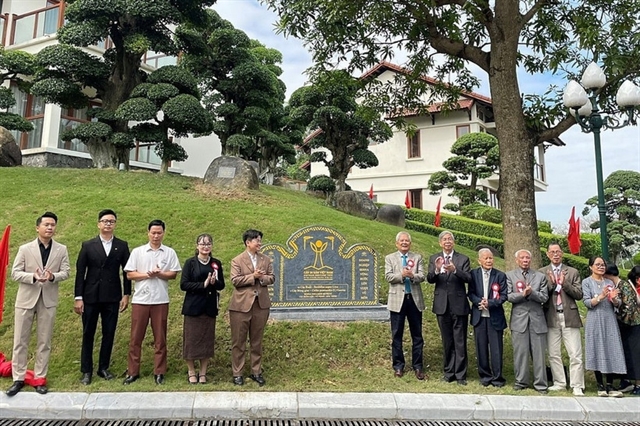 Environment
Environment
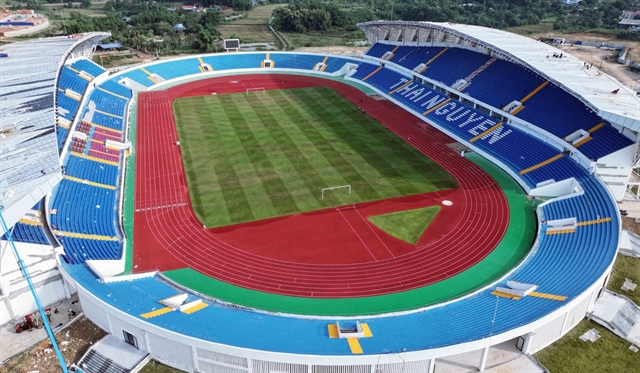
Delayed development of waste treatment projects and poor household rubbish classification has left central provinces facing a serious challenge that could continue for years to come if nothing is done.
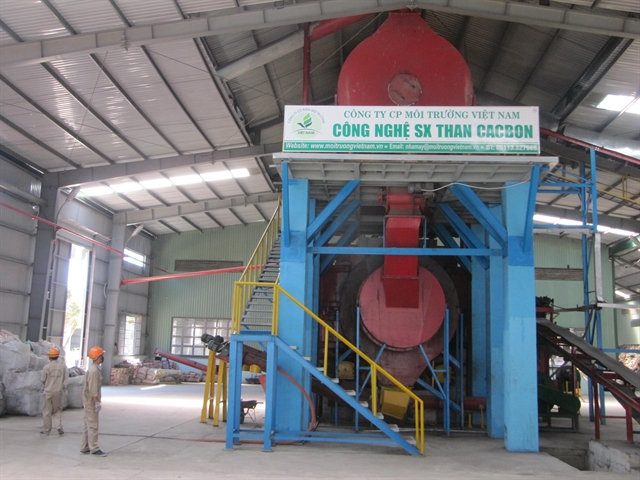
|
| A solid waste treatment project at Khánh Sơn Dump in Đà Nẵng. The project has failed to process daily waste from the city due to poor technology. VNS Photo Công Thành |
By Công Thành
CENTRAL REGION — Delayed development of waste treatment projects and poor household rubbish separation have left central provinces facing a daunting waste challenge hat could continue for years to come.
Quảng Nam, Quảng Ngãi and Đà Nẵng have been fumbling for sustainable solutions to deal with household waste and also hospital and hazardous waste.
Incineration, gasification and refuse-derived fuel technologies, which are sustainable solutions in waste treatment, are available and have been introduced, but local governments have been slow to pick them up due to a lack of interested investors.
Some incineration projects have been shelved while others have been delayed, and those that are in use face protests from residents who say they are located too close to residential areas.
Đà Nẵng, a tourism hub in central Việt Nam, has opened a solid waste treatment plant with a supposed capacity of 650 tonnes per day, but the technology reportedly failed to meet expectations.
The plant received investment from the Việt Nam Environment Joint-Stock Company totalling US$19 million, and the firm has asked to change its operation in the second stage to a waste-to-energy project, but their request has not been approved.
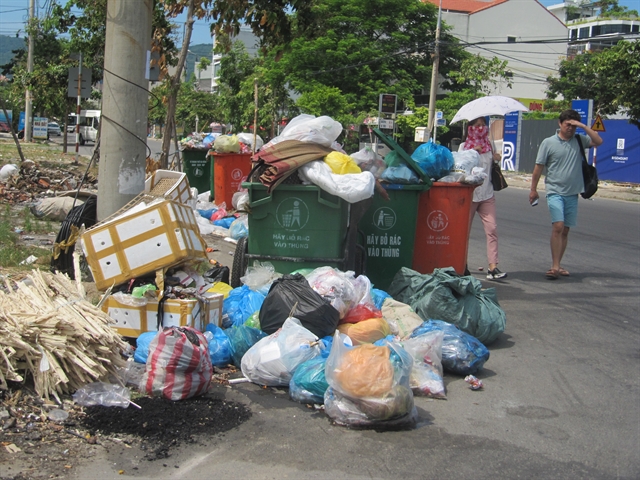
|
| Tourists walk past piles of rubbish in Đà Nẵng. The city is seeking sustainable solutions to deal with household waste. VNS Photo Công Thành |
Local residents were concerned about the technology being used, which was sourced from a joint-venture with Ever Bright from Hong Kong (China) who also ran a project in Cần Thơ Province, where pollution was reported to be far higher than permitted levels.
Director of the city’s Department of Natural Resources and Environment, Tô Văn Hùng, said the city had asked the company to build an incinerator a Khánh Sơn Dump that met European standards.
Khánh Sơn Dump, which currently holds 1.4 million tonnes of rubbish and a source of pollution for underground water, will be closed down by 2020, but the waste-to-energy plant would only open in 2022.
The city has launched a pilot project for household rubbish classification in Thanh Khê and Sơn Trà districts to reduce the amount of waste that makes its way to the dump, but at the moment nothing concrete has been done other than trying to raise public awareness on the issue.
With no other solution likely before 2022, landfills will continue to take the bulk of all household waste. Đà Nẵng releases nearly 1,000 tonnes of solid waste, of which 10 per cent is recycled, each day.
Underdeveloped waste treatment
Meanwhile, Quảng Nam Province is facing the same problem as major dumps are either polluted or overloaded, while waste treatment projects still sitting in the pipeline.
Three dumps in the province receive at least 1,000 tonnes of waste per day, of which 25 per cent is plastic waste.
Local residents have blocked garbage trucks from carrying more waste to the Tam Xuân 2 dump in Núi Thành District because they say it has been polluting the environment for a long time.
Around 80,000 tonnes of solid waste that has piled up between July and September will only be processed when the deadlock is solved.
Chairman of the province Đinh Văn Thu said the management board was negotiating with local residents to deal with pollution at the dump before it allowed the trucks back to the site.
The province has approved two waste treatment projects at Tam Xuân 2 and Tam Nghĩa, but construction will only start in 2019 or early 2020.
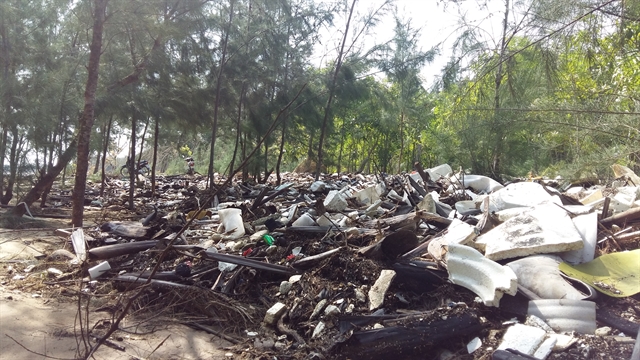
|
| Rubbish swept up on a beach in Hội An after a flood. A large amount of rubbish is carried to beaches in central Việt Nam by floods and storms. VNS Photo Công Thành |
Hội An, a UNESCO-recognised world heritage site which hosts 3 million foreign tourists each year, is also trying to dealing with 270,000 tonnes of solid waste at Cẩm Hà Dump.
The town sends 100 tonnes of daily waste to Tam Xuân 2, but the blockade has forced the tow to dump waste at the already overloaded Cẩm Hà.
A furnace project at the dump was shut down in 2018 due to poor technology and low capacity.
Vice-chairman of the city’s People’s Committee, Nguyễn Văn Sơn, said it was trying to promote waste classification and recycling among the community to ease the burden.
A waste crisis has also been witnessed in Quảng Ngãi Province since 2017 when residents also blocked trucks from Nghĩa Kỳ Dump following a series of pollution and congestion complaints.
A similar situation occurred in Phổ Thạnh Commune where a solid waste treatment plant was built at La Vân Dump in 2016 and started operating in late 2018 – but hundreds of people blocked the way into the plant saying it was too close (300m) to a residential area.
The plant, which was invested by MD Trading and Environmental Technology Co with $2.7 million, was supposed to have a capacity of processing 50 tonnes of rubbish per day but had to shut down after three months.
This means that the 22,500 tonnes of waste have been buried at the dump over the past 10 years has slowly been polluting the environment, while 13 tonnes of untreated rubbish are added each day from Đức Phổ district, adding to the stench.
The province had previously planned three rubbish treatment projects at Nghĩa Kỳ, Bình Nguyên and Đức Phổ, but only one project in Phổ Thạnh Commune has been put into operation.
Quảng Ngãi has been speeding up the construction of a waste treatment plant at Nghĩa Kỳ with a total investment of VNĐ300 billion ($13 million). The plant has been designed to process 150 tonnes of waste including recycling and incinerating each day.
Director of the provincial Department of Natural Resources and Environment Đỗ Minh Hải said the province planned to recycle 85 per cent of daily waste by 2020. It currently produces 500 tonnes of solid waste each day.
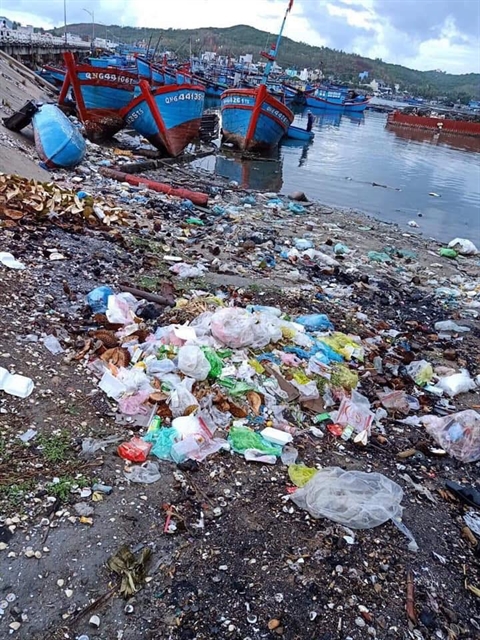
|
| Waste at a fishing dock in Đức Phổ District, Quảng Ngãi Province. The province has been dealing with a waste crisis and lack of waste treatment projects. VNS Photo Công Thành |
According to Dr Đặng Thị Kim Chi, chairman of the Science and Technology Council under the Việt Nam Association for Conservation of Nature and Environment, incineration technology could reduce 80 per cent of solid waste with less risk and more efficiency, as well as take up a smaller space for the construction.
She said the technology could use thermal energy from the garbage furnace to generate power and a suitable option given that waste classification at the source, recycling and collection had been badly managed in Việt Nam.
A source from the Ministry of Natural Resources and Environment said 65 solid waste incinerators were planned in 30 provinces and cities which could generate nearly 1,300MW by 2035. — VNS